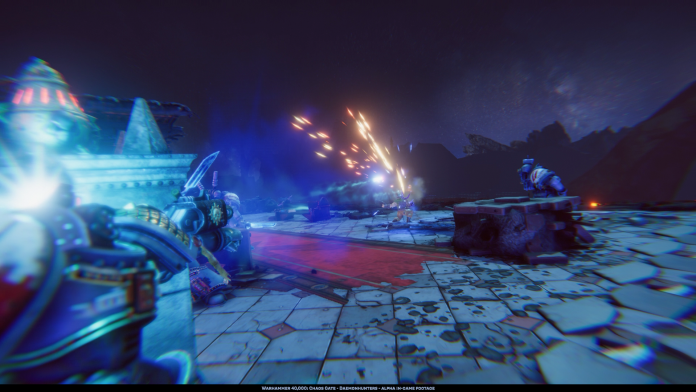The fine folks over at Frontier and Complex Games invited us in for a special sneak peek at their new game, the mouthful of a title that is Warhammer 40,000: Chaos Gate: Daemonhunters. These first impressions are based on that preview event, with screenshots provided by Frontier.
Warhams of a certain vintage may recall the 1998 turn-based-tactics classic, Warhammer 40,000: Chaos Gate. In that storied old game, the player commanded a company of Ultramarines through a campaign against the forces of Chaos. It had everything you’d expect from an XCOM-like: RPG advancement mechanics, tactical turn-based combat, and permadeath for your less fortunate troops. Some 24 years later, the Chaos Gate name has been revived with a new coat of silver paint in Chaos Gate: Daemonhunters. You will likely read the word “XCOM” a lot in this preview, and that is by no means a bad thing.
The Look
One needs only peruse the YouTube channel for Daemonhunters to see that there’s some real care being put into this. Complex Games, who developed Horus Heresy: Drop Assault back in 2015, clearly understand the 40k setting. Grimdark, gothic detail is all over this game, from the character models to the user interface.
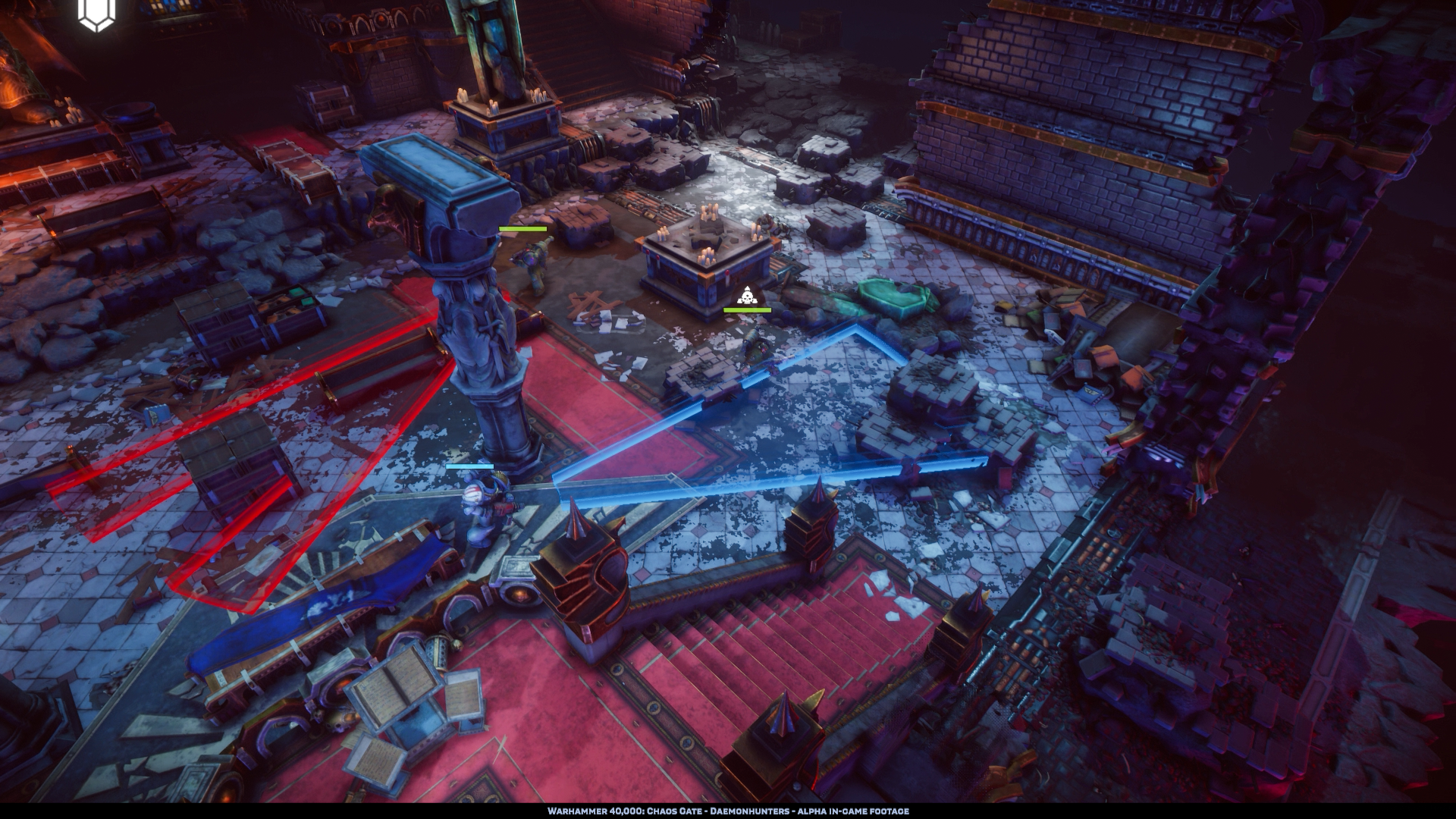
Complex Games’ history as a mobile developer can be seen with the slightly “phone game” bounciness to the animation. Motions are exaggerated and legible at a distance, and characters have cartoony proportions reflective of the models they’re based on. This is not a negative at all in my eyes, as they don’t give up an ounce of 40k character or detail. It gives the game a character distinct from the likes of Dawn of War, Battlesector, or other 40k games.
The Story
Daemonhunters begins with your Grey Knight strike force bloodied and bruised. Their ship, The Baleful Edict, is damaged after a lengthy campaign when they’re hailed by a mysterious Inquisitor. A mysterious Nurgle infection called “The Bloom” is blossoming in the sector, and it’s up to the freshly depleted Grey Knights to stop it.
We know little else about the story so far, but the big draw here is its lead writer: Aaron Dembski-Bowden. As far as Black Library authors go, he’s got a hell of a pedigree and is just about as good as they get in my eyes. It is unclear exactly how involved he is in the writing – if it’s just broad narrative beats or something as nitty gritty as character dialogue – but his involvement can only mean good things for the story.
Campaign-Level Progression
Between missions, the player will be tasked with repairing their ship, refitting and leveling up their squad members, recruiting new Knights, and picking other long-term upgrades and goals. Anyone who has played the recent XCOM games will be familiar with this concept.
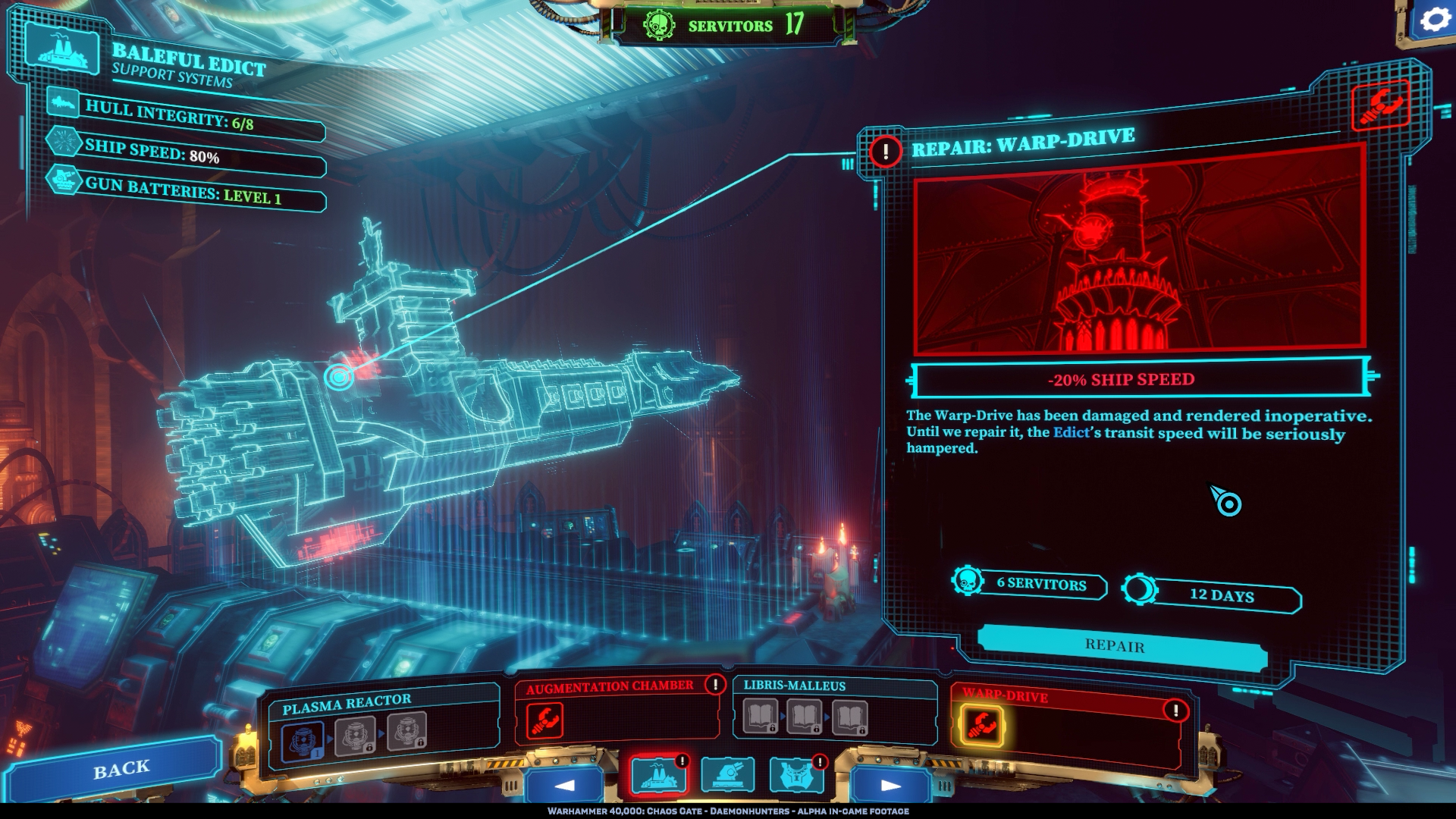
Restoring your ship seems to be the primary means of campaign advancement. Repairing medical facilities, increasing barracks capacity, upgrading your ship’s guns and so on will provide benefits down the line. Complex Games didn’t go hard in the paint on any of these systems during our brief preview, but at a glance there appeared to be a ton to spend time and resources on. There is also a lengthy tech tree where you can research new abilities to combat The Bloom, as well as psychic powers and Stratagems – special abilities that can be thrown down once each per mission to provide some benefit to your squad. They introduce a light deckbuilding element before a mission where you can pick a handful to take in.
The Starmap is how players will choose their next missions. There’s a cute hololithic overlay where you can navigate your ship from planet to planet and review a mission before taking it on. The game seems intent on giving the player as much information as possible, so while above a planet you can see what the mission is, what types of enemies and mutations there are, and what the rewards for accomplishing the mission are. For example, the preview showed a Daemonic Grimoire reward that would speed up research. Some special event missions will also appear at certain points in the game – it was unclear whether these were tied to the narrative or were in some way procedurally generated. Lastly, before embarking on a mission, the player can accept a Glorious Deed challenge. These might be some limitation or extra objective that will increase the difficulty of the mission while also granting better rewards. I am always a fan of this sort of subtler means of picking your own difficulty for a mission.
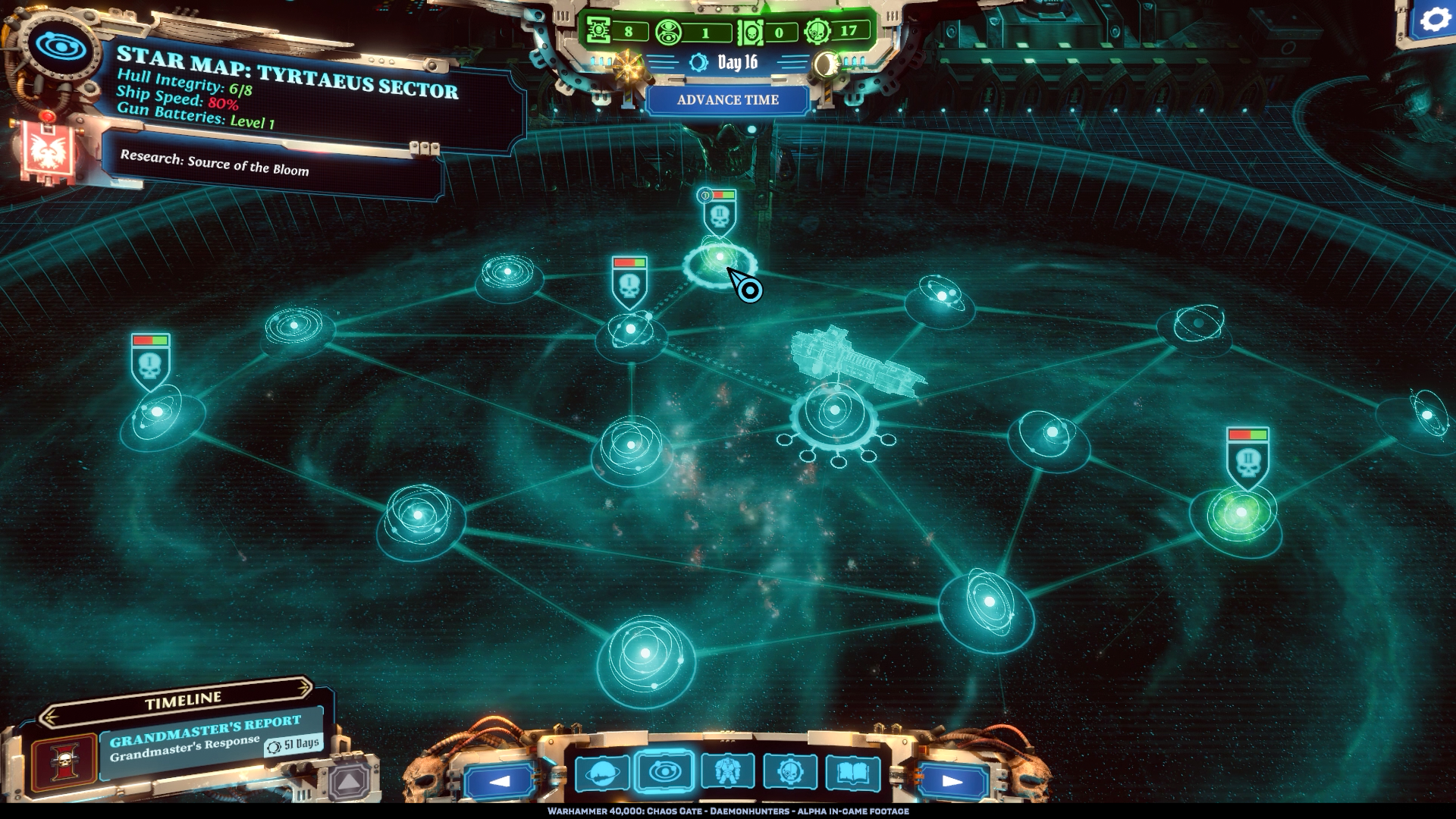
The Bloom
The mysterious Nurgle infection hitting the sector is called The Bloom, and it’s up to the Grey Knights to halt its spread. The Bloom is both a campaign-level and mission-level mechanic that you will be combating at every step of the game. On a campaign level, it is an ever-present threat that needs to be nullified before it spreads out of the sector. Whether this could mean game over for the player is not yet known, but it can’t be good. At the mission level, it changes the battlefields you fight on and the enemies who populate them. A mission in a cathedral could look normal at first, but if you return to the area after its been infected by The Bloom, it will be corrupted and dotted with hazards. Enemies will be mutated and gain extra abilities and visuals to reflect them, which is an unexpected nice touch. Some enemies will also have Bloom Seeds, which you will need to hunt down to slow the spread. This mechanic feels similar to the Doomsday Tracker in the modern XCOM games, but with a uniquely 40k twist.
Your Dudes
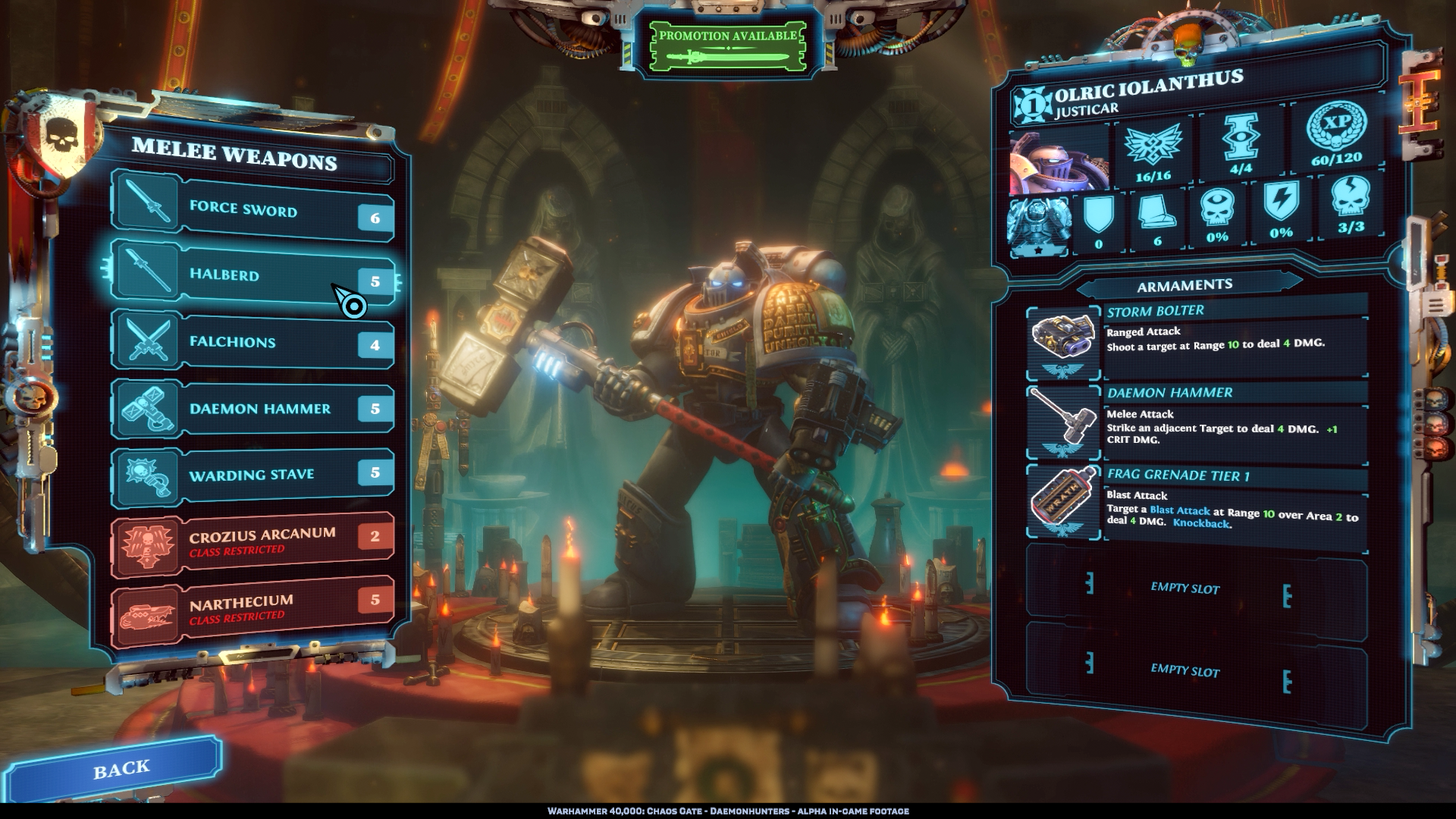
Your squad members are the lifeblood of the chapter, and there’s an embarrassment of customization options for them. In addition to 4 base classes – Interceptor, Justicar, Purgator, and Apothecary – there are 4 advanced classes yet to be revealed, but from the screenshot above one can assume Chaplains will be among them. Each can be equipped with a variety of weapons, armor, and wargear, and as they gain experience can be leveled up. From what little was shown, the level progression resembled a streamlined version of the Sphere Grid from Final Fantasy X. New powers, upgraded abilities, and stat bonuses all seemed to be available with enough experience, including training to equip Terminator armor.
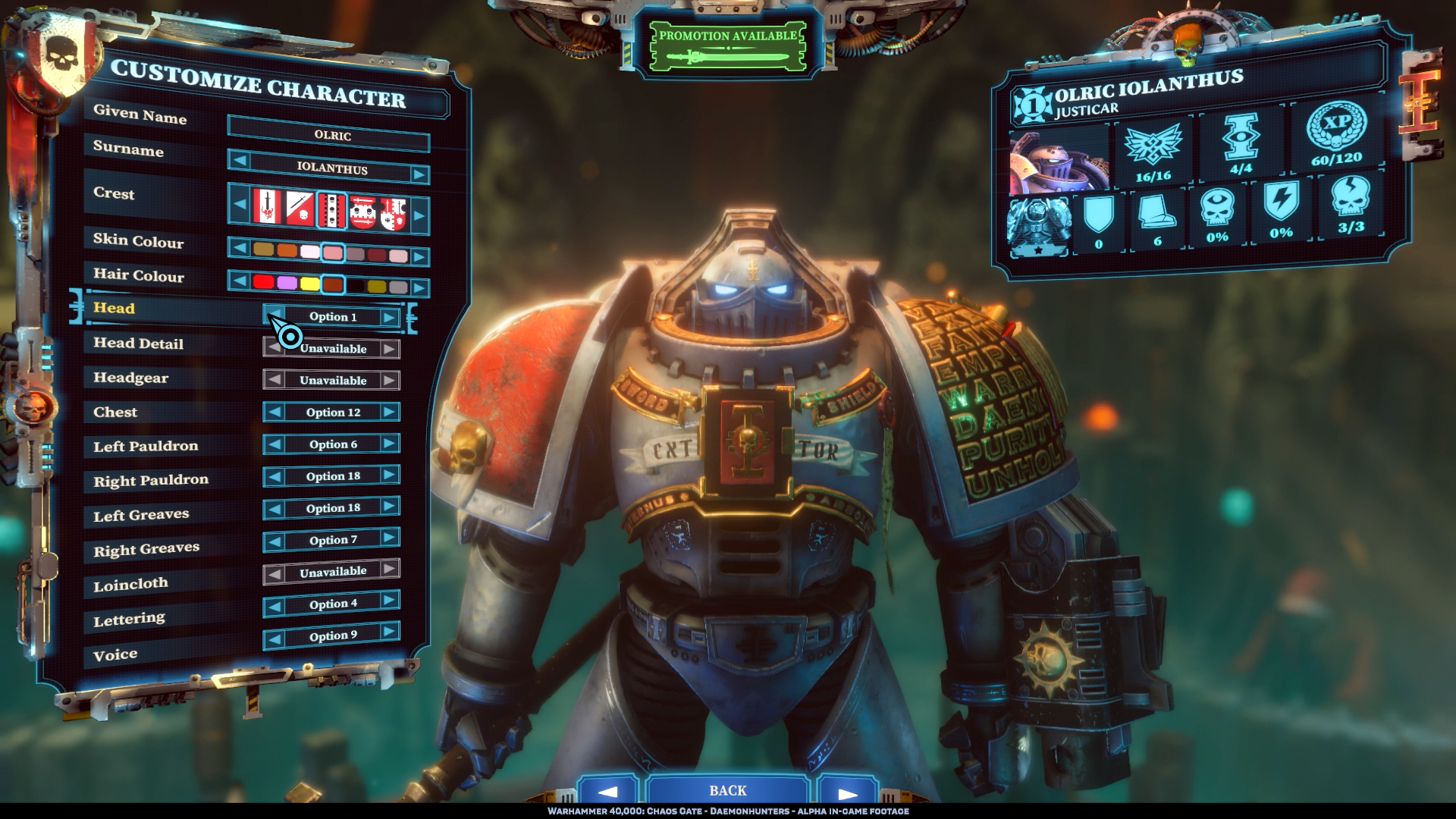
What may be most exciting to some, however, is the cosmetic options for your Marines. Picking their faces, voices, heraldry, and armor cosmetics should give players ample opportunities to dress up their space dollies however they’d like. Any Warhammer game that drops without the option to personalize your dudes is missing something pretty intrinsic to the Warhammer hobby, and the folks at Complex Games clearly understand this.
Combat
Everything up until this point has just been the framework for the real meat of the game: the tactical combat. Before each mission you choose 4 Knights from your barracks and they get teleported to their target in an extremely cool cutscene. From here, it’s turn-based combat as your team of Grey Knights explores the map and fights the Nurgle-touched forces of The Bloom.
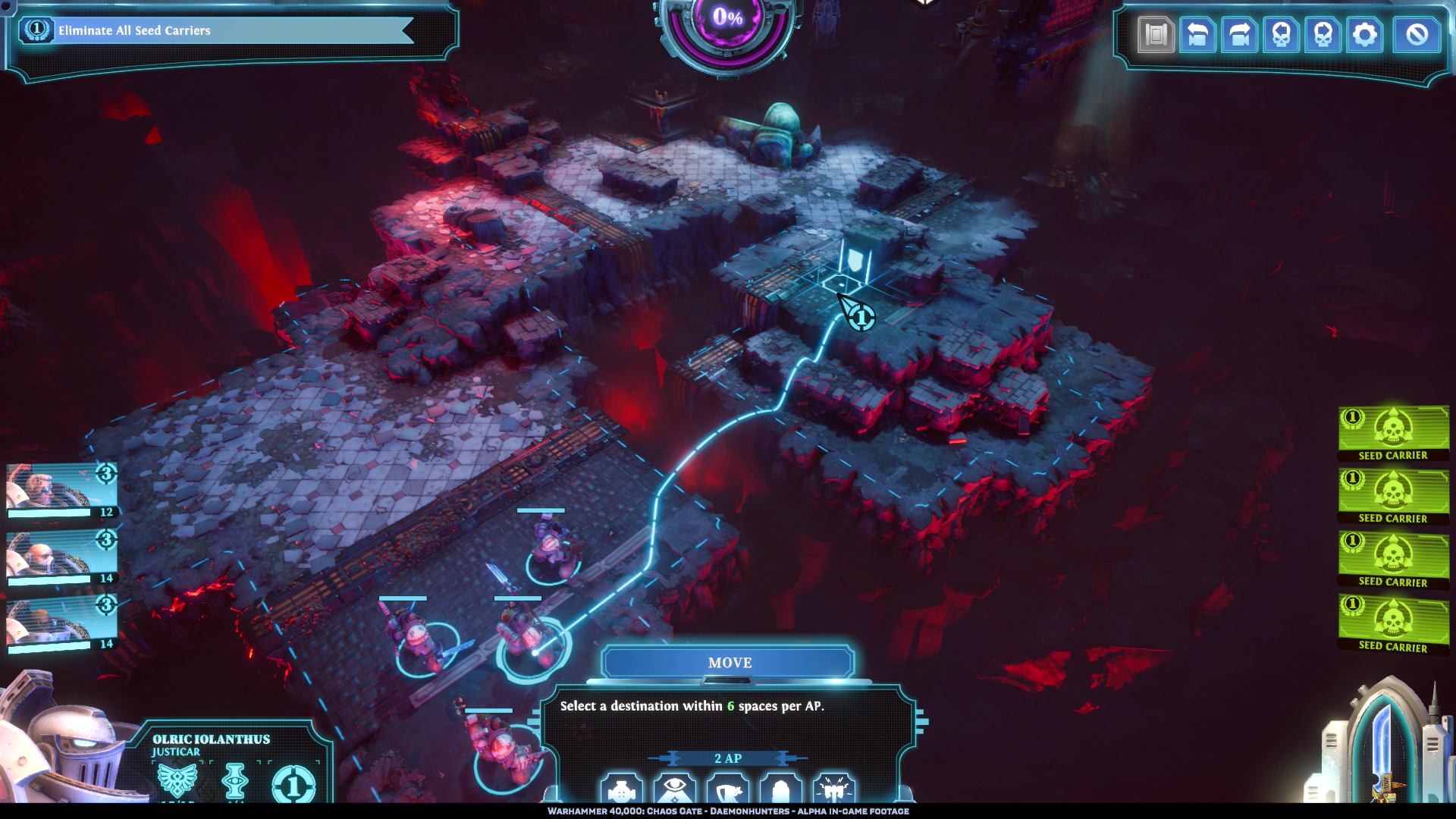
On first glance, one might be excused for thinking this is an extremely impressive XCOM mod. Squad members navigate across grid-based maps replete with perfect information on how far they can move, plus shield icons for half and full cover. However, unlike XCOM, it does not appear the Grey Knights are liable to miss a 95% shotgun shot at point blank range. Your dudes flat out do not miss – these aren’t some green recruits with NERF guns, they’re the best posthumantiy has to offer. Instead, they’ll do more or less damage dependent on the level of cover their enemies are in, so flanking is still very much an important element here. Perfect information really seems to be a driving force in Daemonhunters, as icons will show how much damage a Grey Knight can expect to do when moving into a given square vs. a given target, even before they get there.
Naturally, the cover your enemies are in can be forcibly removed with grenades, heavy weapons, psychic powers and the like. The preview showed a fairly standard iteration of this idea – blowing up a wall to expose an enemy before gunning him down – only to build on the idea later. One grenade throw blew up a bridge and dropped a horde of cultists into a chasm, while another Grey Knight shoulder checked a statue onto a hapless goon, squishing him utterly. These kind of flashy features show off really well in trailers, let’s hope they’re as effective and enjoyable to use in the final game.
Much attention was called to Precision Strikes – think of them like the VATS attacks in Fallout games. When an enemy is stunned or you get a critical hit, you can pick a specific part of the enemy to attack, causing status effects, disarming enemies, or doing bonus damage. This was first used to disarm a Nurgle preacher who was buffing their allies, and by destroying his staff the buff was removed. The second time around, this ability was used on a Hellbrute that had a Grey Knight in his grasp. By cutting off his hellscourge, the Knight was freed and the Hellbrute became less dangerous. I don’t think this will come in handy against your average autogun-wielding Chaos goon, but against the big bosses this game has to offer – Hellbrutes, Great Unclean Ones, and Mortarion himself – it looks like an extremely satisfying way to ensure victory. Stunned enemies at low health can also be executed in some impressive Mortal Kombat-esque fatilities, which looked to give some battlefield-wide buffs and debuffs depending on who got killed.
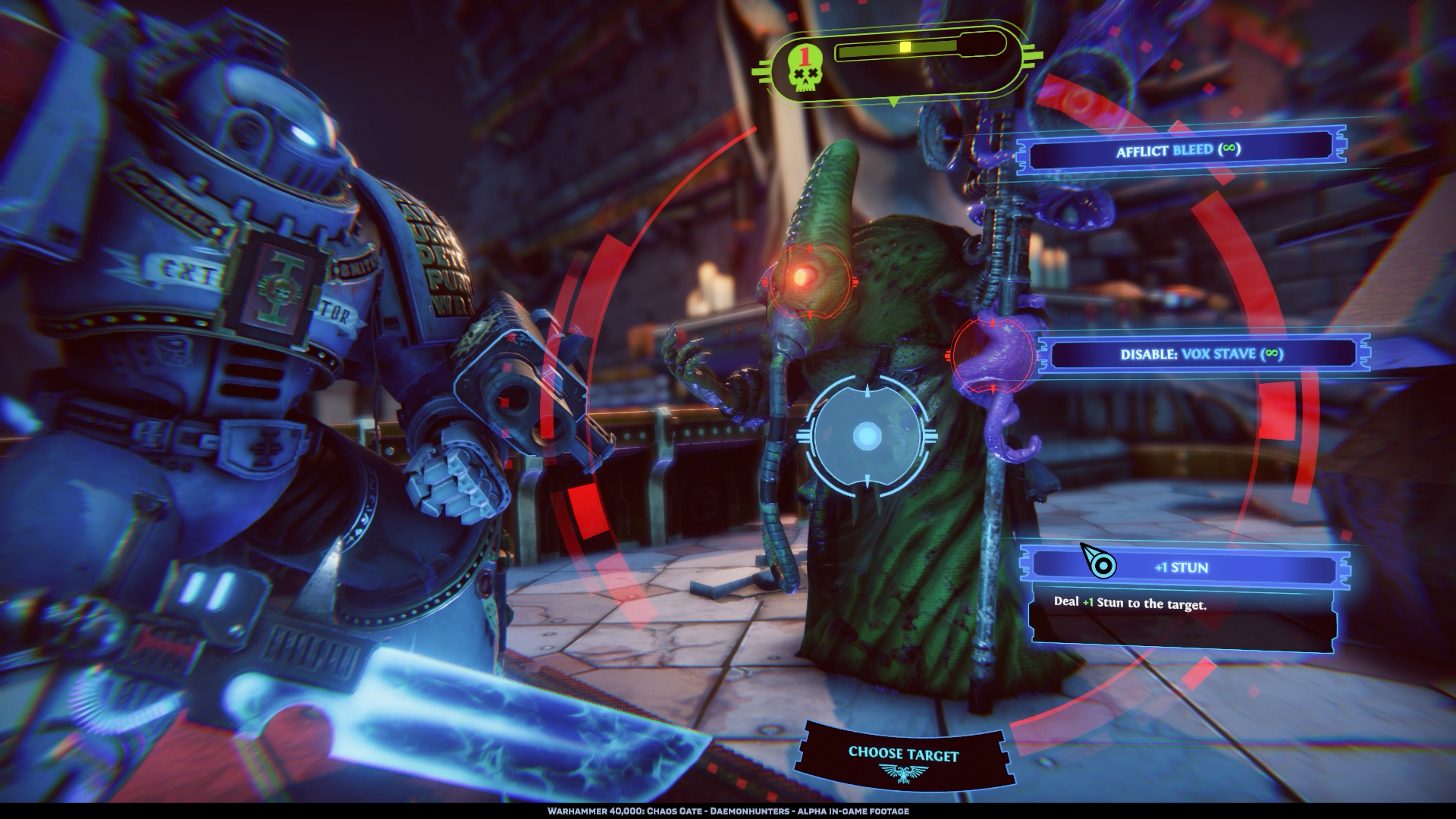
While the Grey Knights are going to cut through chaff like nobody’s business, their missions are dangerous and they can still get in trouble. One Knight overextended and got blasted by a Hellbrute, which put him in a downed state, à la Gears of War. The squad’s Apothecary rushed to revive him, which brought him back at half of max health. If he hadn’t been revived, he likely would have suffered a critical injury. It was unclear what these might entail, but other supporting materials have shown bionics and the like, so it’s likely you could end up with some pretty beat up Battle Brothers by the end of a campaign. It was also unclear if permadeath was on the table, but I imagine some intrepid XCOM Ironman player will mod it in if it isn’t included.
By now, battles seem about as feature-rich as a tabletop game of 40k, but we’re not done yet. Willpower is a resource your Grey Knights have access to that can be tapped into to utilize psychic powers, extra actions, and other special abilities. Willpower can be restored by killing dudes, which is something you will be doing often in this game.
Lastly, there are Warp Surges that can affect the battlefield. These sounded like semi-randomized events that can happen anytime in a battle. I imagine there will be a load of these, but the developers mentioned surges that could mutate your enemies or inflict ailments on the Grey Knights. The Warp Surge in the preview warped in a squad of flanking cultists who were quickly dispatched with a well-placed grenade.
The Bottom Line
There is still a lot we don’t know about Chaos Gate: Daemonhunters. The breadth and depth of its upgrade trees, twists and turns of its narrative, and how well its gameplay holds up over time are all still shrouded in mystery. From this preview event and the existing material on the game’s YouTube channel, we can at least be certain of a few things. This game has a load of care put into it, and its visuals are pretty fantastic. The developers are wearing their influences on their sleeves, and are enthusiastic about the work they’re doing. I hope this will be the next great Warhammer game, and from what I’ve seen so far, it’s certainly got promise. As with all hype, time will tell on that. For the final verdict, tune back in after the game’s release on May 5, when we here at Goonhammer will have a formal review.
Have any questions or feedback? Drop us a note in the comments below or email us at contact@goonhammer.com.
